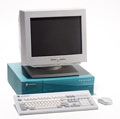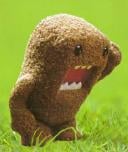I know that the chances of me finding someone who is willing to part with their beloved Ultra 64 board range from absolutely slim to completely and utterly none but I figured if I didn't ask then I'd have even less of a chance than I would if I did ask!
So there it is, I'm not expecting any replies to this request as I know for a fact that if I owned an Ultra 64 board then I'd never sell it either.
Oh well, thanks for looking (and probably laughing at me at the same time!)
I've got cash waiting in the slimmest of hopes that someone actually does want to part with their most prized possession. Obviously that figure will increase dramatically if it comes with the even rarer joybus connector board.
Cheers
So there it is, I'm not expecting any replies to this request as I know for a fact that if I owned an Ultra 64 board then I'd never sell it either.
Oh well, thanks for looking (and probably laughing at me at the same time!)
I've got cash waiting in the slimmest of hopes that someone actually does want to part with their most prized possession. Obviously that figure will increase dramatically if it comes with the even rarer joybus connector board.
Cheers





















